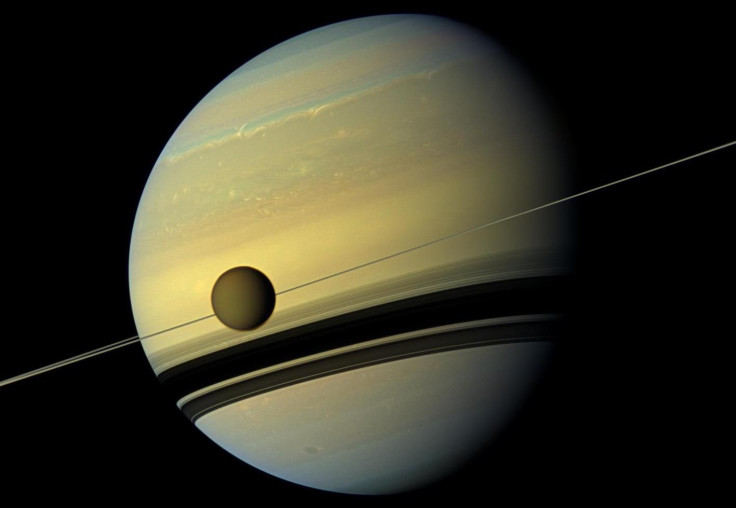Saturn’s Moon Titan Has Deep Canyons Flooded With Liquid Methane, Cassini Data Reveal

Scientists have found deep canyons with walls as steep as ski slopes on the surface of Titan, according to a new study, based on radar observations by NASA's Cassini spacecraft. The latest findings represent the first direct evidence of such features on Saturn’s largest moon, providing opportunities to better understand Titan’s origins.
Cassini’s radar instrument made the observations when the spacecraft passed Titan from a close distance in May 2013. The data provided by Cassini later revealed that the liquid-filled channels on the moon were narrow canyons generally less than half a mile wide and 790 to 1,870 feet deep. Scientists detected eight canyons branching off from Vid Flumina, a more than 249-mile-long river flowing into Titan's second-largest sea, Ligeia Mare.
The findings of the study, published in the journal Geophysical Research Letters on Tuesday, suggest that the canyons on Titan were likely carved by liquid methane draining into Vid Flumina — a process similar to the carving of river gorges on Earth. Previous observations helped scientists suspect that the channels, some of which appeared canyon-like, might be filled with flowing methane. However, they lacked direct evidence until now.
According to scientists, the presence of the deep canyons on Titan suggests that the process, which created such cuts, was active for a long time, or it might have eroded down much faster than other areas on the moon’s surface.
“It’s likely that a combination of these forces contributed to the formation of the deep canyons, but at present it's not clear to what degree each was involved. What is clear is that any description of Titan's geological evolution needs to be able to explain how the canyons got there,” Valerio Poggiali of the University of Rome, a Cassini radar team associate and the lead author of the study, said in a statement.

As part of the study, scientists draw comparisons between Titan's canyons, and Arizona and Utah’s Lake Powell and the Nile River gorge as both feature canyons and valleys engraved by erosion from flowing liquid. According to Rosaly Lopes, a planetary geologist at NASA's Jet Propulsion Laboratory in Pasadena, California, Titan is the only planetary body in our solar system — other than Earth — to have a surface actively eroding on a large scale.
“We have seen some canyons elsewhere, such as Vallis Marineris on Mars,” Lopes said in a statement. “However, on Titan, this study shows evidence that some canyons are still filled with liquid and presumably in the process of carving canyons.”
Launched in 1997, the Cassini spacecraft has allowed scientists to have their first up-close look at Saturn, its rings and moons. Cassini's observations have also helped scientists discover many Earth-like features on Titan, providing a better glimpse of what our planet might have looked like millions of years ago.
© Copyright IBTimes 2024. All rights reserved.






















